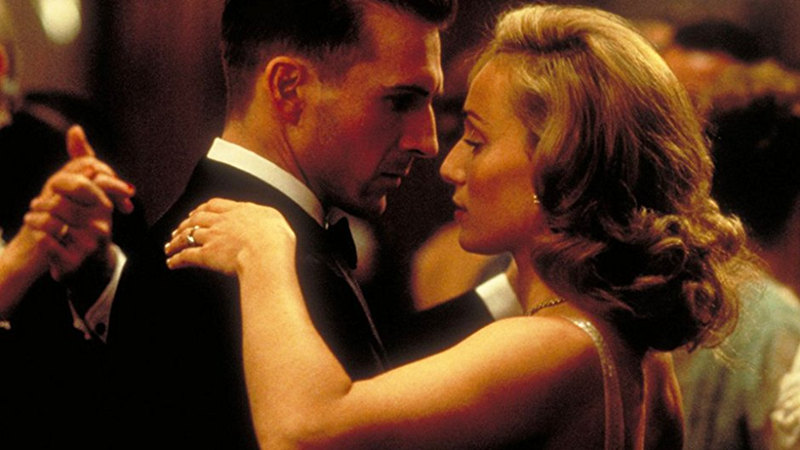This is the third screen adaptation of John Godey’s novel, “The Taking of Pelham One Two Three,” and in director Tony Scott’s hands it’s a “Speed” style film about four men who hijack a New York City subway train and hold some of the passengers hostage. The original novel came out in 1973, long before the threat of terrorist attacks forced heightened security, so it might be a bit of a head-snapper to see how readily these guys are able to board a post-9/11 train carrying automatic weapons during the height of rush hour. What’s more, they look bad-ass suspicious. But if you can get past the logic here and deal with a few cheesy lines, John Travolta’s sometimes sneeringly over-the-top performance as the alpha villain, and the director’s jerky cameras and heavy-handed use of CGI, “The Taking of Pelham 1 2 3” is a decent action-thriller.
I won’t get into comparisons between the 1974 film starring Walter Matthau as the good guy and Robert Shaw as the criminal mastermind, because I frankly don’t remember much other than that it was interesting mostly because of the psychological ramifications and the tick-tock tension. In it, a police lieutenant had to try to appease the hijackers and meet their deadline for a million bucks so they don’t start killing passengers, while also trying to figure out how to catch these guys. A few twists in this update from Scott (“Man on Fire,” “Enemy of the State”) include Walter Garber (Denzel Washington) no longer being a law enforcement guy, but rather a former big-shot who’s under investigation for taking a bribe who finds himself at the controller’s desk having to deal with the main criminal over the telephone; and the main villain (Travolta) is no longer an ex-mercenary soldier, but a former Wall Street trader who served time in prison for shady dealings. The twist gives the men something in common, despite their essentially opposite natures. The only other major change is the ransom figure. If you asked for a million dollars in exchange for more than a dozen hostages, you’d get the same laughter that provoked Dr. Evil in “Austin Powers.” So the ransom keeps pace with inflation: a respectable 10 MEEL-ion dollars.
The screenplay comes from Brian Helgeland (“Man on Fire”), who received an Oscar nomination for “Mystic River.” Apart from some of those cheesy lines (which could, admittedly, have been ad-libbed), the script is full of solid dialogue and a credible tension. The only other illogical moment is at least recognized by the lead cops: when they have less than an hour to meet the terrorists’ demands, why on earth would they send the money via motorcade rather than sending it by helicopter and lowering it to the officers who’ve set up outside the subway entrance that’s closest to where the bad guys have stopped the train? The answer is obvious: because it gives Scott a chance to work a series of car crashes into an otherwise psychological thriller. But that doesn’t make it any less illogical, and frankly, the crashes weren’t all that great.
It’s Scott’s nervous camerawork that makes us wonder how much is intended to add visual tension to match the psychological chess match, and how much of it is a cover-up to save money by using CGI rather than real train footage. The runaway train sequence in “Spider-Man 2” was far more believable. The strength of this film lies, as it did with the first, in the game of wits between Garber and Ryder, with the mayor adding interest simply because he’s actor James Gandolfini, who must be breathing a sigh of relief that it’s now possible for audiences to see him as someone other than Tony Soprano.
But there are a few times when Scott almost seems to take a shortcut or two when a longer take might have been called for, and a few times when the scenes seem cut from stock footage, they’re so clichéd. I thinking here of when Garber has to leave his desk and become more physically involved in the operation, and he phones his wife to have the world’s most predictable conversation, with a little cheese tossed in for good measure.
Collectively, these are the things that keep “The Taking of Pelham 1 2 3” from being a top-of-the-line action-thriller. Even so, it’s still an entertaining film, and as I watched I found myself wavering back and forth between thinking it a 6 out of 10 and thinking it a 7. You could catch me tomorrow and I might go with a 7, mostly because Washington’s performance is superb as usual, and it’s his Everyman putting on the cape to save the day routine that carries the film–that, and decent pacing and sustained tension. The situation isn’t all that fresh to begin with, but it’s a fairly solid presentation. Today, though, I’m leaning more toward a 6 just because of all those negatives that keep it in the good-but-not-great category.
Video:
Aside from those blurred CGI action segues that compensate for a lack of real choo-choo terror, the bulk of “The Taking of Pelham 1 2 3” looks terrific on Blu-ray. The AVC/MPEG-4 transfer is solid, with no artifacts or clean-up work apparent . . . or needed. As we’ve come to expect from 1080p, the images are chock-full of detail, which survive under all different sorts of lighting conditions. Black levels are strong, so that in the darker scenes in the subway tunnel we get. “The Taking of Pelham 1 2 3” is presented in 2.40:1 aspect ratio, and you need every widescreen inch for some of the scenes, like a helicopter view of New York City marred only by a line of dialogue that has a hostage negotiator telling Walter that the view reminds them of what “they’re fighting for.” Arrrgh!
Audio:
The featured audio on this one is an English, French, or Spanish DTS-HD MA 5.1, and I predict this will be a big hit with Spanish speakers because it’s one of the few Blu-ray titles that doesn’t relegate Spanish to a lesser Dolby Digital 5.1 track. There’s an English audio-descriptive track for the hearing impaired, but everything else shares a top-notch soundtrack. The dynamics on this one are quite good, with rich voice reproduction and active effects speakers that give you a full sense of the city and its surroundings. Subtitles are in English, French, Spanish, and Portuguese.
Extras:
Lead car on the bonus features train is a making-of feature that runs a half-hour and takes you from conception to post-production in a better-than-average behind-the-scenes piece. And if you’re curious about the NYC subway system, you can watch about a 15-minute feature on that, which includes commentary on the challenges of filming in those cavernous tunnels. This too isn’t bad. But the hairstyling feature feels like a throwaway, and anything that runs just five minutes is almost admitting as much. Other than the usual BD-live enabled stuff and a little feature on “Marketing Pelham,” the only other content-related bonus features are a pair of commentaries. The first comes from Scott, in which he talks in detail about the film and tries to distance it from the 1974 version. A second commentary track features Helgeland and producer Todd Black that offers more of the same, with the focus on the hows and whys rather than anecdotes. As commentaries go, they’re about like the movie–good, but not great.
And, as the box advertises, there’s a digital copy of the film included which is downloadable onto PCs, PSPs, Macs, or iPods.
Bottom Line:
I was trying to picture what this film would have been like without Denzel Washington. Travolta isn’t a bad villain, but there are times when he goes a little too over-the-top, almost as if he were still trying to shed that oversized dress from “Hairspray.” As action films go, “The Taking of Pelham 1 2 3” is decent enough. But a high-quality Blu-ray picture can do wonders for a film. You’re so busy enjoying the sound and picture quality that you’re inclined to forgive the film’s missteps.


